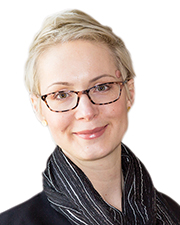
JCJ Architecture
From a designer’s perspective, what makes Hartford truly unique are the ways in which the city brings together history, culture, environmental stewardship and design within an authentic urban framework. These components–coupled with the efforts of community leadership, vibrant institutions, talented local design firms and committed residents–are propelling the city into a transformative era that coincides with celebration of the city’s 400-year anniversary in 2035.
Honoring the City’s Historic Past: Hartford is home to the country’s oldest public art museum, the oldest publicly funded park, and the oldest continuously published newspaper. Nearly 20% of Hartford’s buildings are located on national, state or local historic registers. These tremendous assets provide a sense of continuity, stability and character. One of the mechanisms being utilized to protect and enhance these Hartford assets and more are Neighborhood Revitalization Zones (NRZs). Established in 1995, NRZs were created to enhance the quality of life for all in the community. As a board member and development chair of one of these NRZs, I have directly witnessed Hartford’s way of ensuring that all diverse members of the community have a voice and have been involved with the collaboration among residents, business owners, and all levels of government. NRZs are the first point of contact for the city’s Historic Preservation Commission and Planning and Zoning Commission should any neighborhood character-altering proposal come forward. The city consults NRZs for Hartford’s decennial strategic plan (2035 city plan), currently in draft stages. NRZs play an important role in supporting dialogue and a framework around ways that we can improve the city for future generations.
Celebrating the City’s Culture: Embracing the voices of the community, formulating an inclusive and innovative city plan, and preparing for the city’s quadricentennial, we are coming together to achieve initiatives that will both preserve and utilize our rich culture to push the city forward. As a result, we’re seeing multiple transformations in community connectivity, restoration, and stewardship. Riverfront Recapture (RR), a non-profit organization, whose board I happen to serve on, is one such leader in the area promoting a reconnection between Hartford area population and the Connecticut River.
For background, I-91 serves as a divider between the city and the river itself. By creating and maintaining paths, parks and plazas flanking both sides of the river, RR has worked to renew the connection between people and the river. Further encouraging this synergy is the numerous social events (food truck, cultural, music festivals), physical fitness programs (cyclocross tournaments, rowing programs, dragon boat races), and environmental activities (tree planting, nature hikes) organized free of charge by RR and attended by the diverse populations of the city.
Promoting Development in Hartford Through a Design-forward Lens: As an architect with JCJ Architecture, I have experienced first-hand how our efforts have positively impacted the city and will contribute to the 2035 city plan.
From internal efforts like signing on to the AIA 2030 challenge to area-impacting efforts of rehabilitating Dillon Stadium and designing local public schools and Boys & Girls Clubs, our national design firm has a positive role to play in impacting the city today and in the future.
It’s an exhilarating time to be part of Hartford’s growth, with all that the community is doing to help the city reach its full potential. I’m excited for the next two decades of Hartford’s revitalization as we push for greater innovation, stewardship and progress, all while preserving the history that made the city a significant piece of the New England region.
Josye Utick, AIA, NCARB, CDT, is a project designer/associate at JCJ Architecture, Hartford, Conn.








